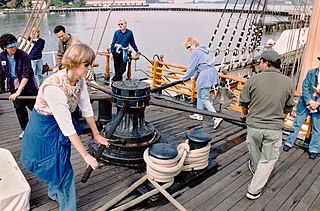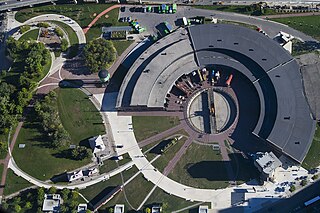
A railway roundhouse is a building with a circular or semicircular shape used by railways for servicing and storing locomotives, and traditionally surrounds, or is adjacent to, a turntable.
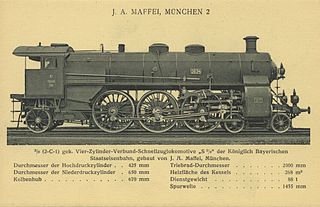
The Class S 3/6 steam locomotives of the Royal Bavarian State Railways were express train locomotives with a 4-6-2 Pacific or 2'C1' wheel arrangement.

The DBK Historic Railway is a preserved railway association in Crailsheim, Germany.

The Prussian Class P 8 of the Prussian state railways was a 4-6-0 steam locomotive built from 1906 to 1923 by the Berliner Maschinenbau and twelve other German factories. The design was created by Robert Garbe. It was intended as a successor to the Prussian P 6, which was regarded as unsatisfactory.
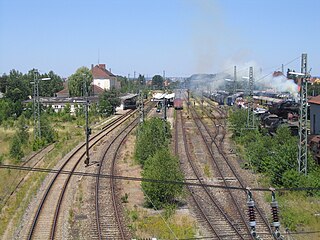
The Bavarian Railway Museum is a railway museum based in the old locomotive sheds at Nördlingen station in Bavaria, Germany. It is home to more than 100 original railway vehicles and has been located in the depot at Nördlingen since 1985.

The Nuremberg Transport Museum is based in Nuremberg, Germany, and consists of the Deutsche Bahn's own DB Museum and the Museum of Communications. It also has two satellite museums at Koblenz-Lützel and Halle. The Nuremberg Transport Museum is one of the oldest technical history museums in Europe.

The Class 44 was a ten-coupled, heavy goods train steam locomotive built for the Deutsche Reichsbahn as a standard steam engine class (Einheitsdampflokomotive). Its sub-class was G 56.20 and it had triple cylinders. It was intended for hauling goods trains of up to 1,200 tonnes on the routes through Germany's hilly regions (Mittelgebirge) and up to 600 tonnes on steep inclines.

The German Steam Locomotive Museum or DDM is located at the foot of the famous Schiefe Ebene ramp on the Ludwig South-North Railway in Neuenmarkt, Upper Franconia. This region is in northern Bavaria, Germany. The DDM was founded in 1977.

The Class 80 tank engines were German standard locomotives (Einheitsloks) with the Deutsche Reichsbahn. They were intended to replace the aging, rickety state railway line engines performing shunting duties in their dotage at large stations.

The steam locomotives of Class 23 were German passenger train locomotives developed in the 1950s for the Deutsche Bundesbahn. They had a 2-6-2 wheel arrangement and were equipped with Class 2'2' T 31 tenders. They were designed to replace the once ubiquitous Prussian P 8 engines that had been built between 1908 and 1924 and, in their day, were the most numerous post-war replacement class.

An Ausbesserungswerk is a railway facility in German-speaking countries, the primary function of which is the repair of railway vehicles or their components. It is thus equivalent to a 'repair shop' or 'works'. It is also referred to as a Centralwerkstatt or Zentralwerkstatt or Hauptwerkstatt. During the Deutsche Reichsbahn-Gesellschaft (DRG) period between the two world wars these facilities were called Reichsbahnausbesserungswerke (RAW).
Bahnbetriebswerk Hermeskeil is a small, Prussian locomotive depot at Hermeskeil, in the state of Rhineland-Palatinate in Germany that dates from 1888. Until 1903 it was called a Maschinenstation.

A Bahnbetriebswerk is a German railway depot where the maintenance of locomotives and other rolling stock is carried out. It is roughly equivalent to a locomotive shed, running shed or motive power depot. These were of great importance during the steam locomotive era to ensure the smooth running of locomotive-hauled services. Bahnbetriebswerke had a large number of facilities in order to be able to carry out their various maintenance tasks. As a result, they needed a lot of staff and were often the largest employers in the area.
Tube cleaning is the process whereby the boiler tubes of steam locomotives are cleaned out, removing soot and ash in order to ensure the effective generation of the draught for the fire. This was often done with steam lances or compressed air and accompanied by brushing as required.

The DB Museum in Koblenz was opened on 21 April 2001 as the first remote site of the Nuremberg Transport Museum. It is run by volunteer workers as part of the Stiftung Bahn-Sozialwerk (BSW), a kind of railway workers social service organisation, and has its origins in a BSW's 'Group for the Preservation of Historical Railway Vehicles' at Koblenz.

The Bahnbetriebswerk Passau is the locomotive shed that belongs to Passau's main station, the Hauptbahnhof.
The Minden Museum Railway or MEM was founded in 1977 as a society. Its aim was to preserve historic railway vehicles and operate them on the Minden District Railway. It was not long before the first museum train worked the line. The museum's vehicles were initially housed in the coach hall of the MKB's old locomotive depot (Bahnbetriebswerk) at Minden Stadt station.
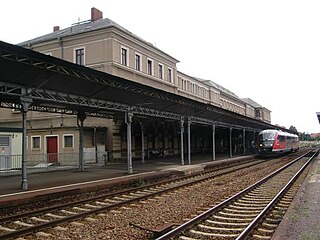
Bautzen is a railway station in the town of Bautzen, Saxony, Germany. The station lies on the Görlitz–Dresden railway line and Bautzen–Bad Schandau railway line, the latter now being closed. The station is also on the former Bautzen–Hoyerswerda railway.


















